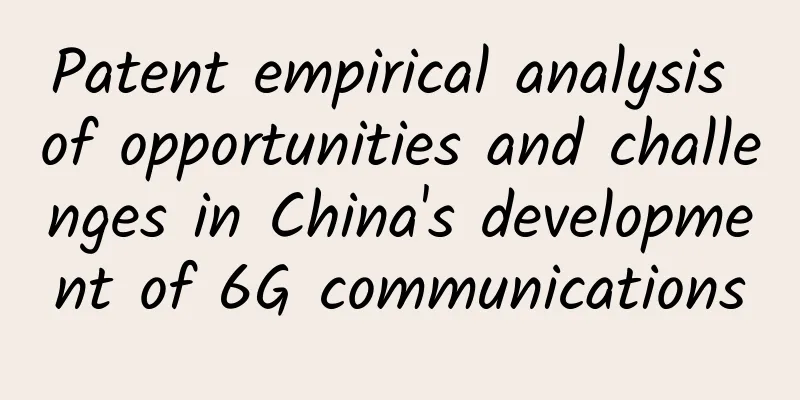5G+AI: Will it produce the effect of 1+1>2 in the future?

|
Since the information industrial revolution, people's lives have undergone tremendous changes. The emergence of each new technology will continue to influence and even change our lives from multiple levels, multiple angles, and multiple dimensions. Before the emergence of 5G technology, new technologies such as artificial intelligence, big data, the Internet of Things, edge computing, and cloud computing had already appeared. According to Gartner's technology maturity curve, big data and cloud computing have gone from the triggering stage to the expansion stage, the disillusionment stage, the climbing stage, and now have entered the stable stage. Gartner Hype Cycle Artificial intelligence and edge computing based on deep learning are still at the peak of the expansion period, but the Internet of Things has begun to slowly enter the disillusionment period. These technologies are constantly developing in their respective fields, but if these technologies can be integrated and developed in a coordinated manner, they may give rise to a new force and promote great changes in human society. Nowadays, 5G has been gradually commercialized and has initially shown its technical charm and business prospects in the market. The development of artificial intelligence has been included in the national strategic level of development by various countries and has become a powerful driving force for national social development. In the future, how will 5G+AI be integrated? What kind of huge charm can it produce? Artificial Intelligence and 5G The development of artificial intelligence technology is inseparable from the support of algorithms, computing power and data. Even when there are major breakthroughs in algorithms and computing power, artificial intelligence systems still rely on big data in real scenarios to take root. In the past 4G era, we have spawned many new industries, such as location, mobile social networking, short videos, etc. However, for many industrial fields, the development is still very slow. While 4G brings new service methods and business models, it also makes us realize that 4G networks are far from meeting the needs of the rapidly growing intelligent era. The difference between 5G and 4G The emergence of 5G is precisely to solve problems that cannot be solved in the 4G era, and its core lies in the support for various vertical fields. In the future, 5G networks will inevitably bring more data, which will require big data and artificial intelligence technologies to process and transform data. 5G networks will inevitably further promote cloud platform services to ensure that more small businesses and small customers can enjoy better access speeds and computing services. At the same time, the complexity of 5G networks has also brought unprecedented challenges to network operation and maintenance, which is an ideal position for artificial intelligence. At the MWC Barcelona 2019, intelligent network operation and maintenance became the hottest application scenario in the field of artificial intelligence. The technical complementarity and close connection between 5G and artificial intelligence should form a "1+1>2" effect in the future. The concept of artificial intelligence was born at the Dartmouth Conference in 1956. Its technological development has also experienced several ups and downs. Finally, when Google launched the AlphaGo robot in 2016, it once again entered the forefront of the era. Companies and products based on image recognition and speech recognition based on artificial intelligence have also emerged one after another. However, despite the popularity of artificial intelligence, its application scenarios are also very wide, but there are not many applications that can truly affect our lives. The emergence of applications such as smart recommendations, smart marketing, and smart speakers, while changing business models and business efficiency, also makes us reflect on whether artificial intelligence can only do these things? Why are there so few commercial applications of artificial intelligence? Artificial intelligence applications that truly improve social efficiency are even rarer. The reason is that when artificial intelligence enters industrial production and various life application scenarios, it will face many problems such as security control, high production costs, poor product quality, and difficulty in data collection. How does 5G solve the problems faced by artificial intelligence in its promotion process? In the past, we couldn’t imagine what it would be like to live without a wallet, but now it has become the norm in our lives. 4G mobile Internet has generated location, mobile social, short video and other services, which have greatly facilitated everyone’s daily life and brought about a significant improvement in social productivity and production efficiency. Then, the future 5G network, with its characteristics of large bandwidth, large connection and low latency, will inevitably bring us more new application experiences beyond imagination, and will also enable the implementation of more large-scale artificial intelligence applications. The following uses autonomous driving, VR/AR and cloud robots as examples to describe how 5G networks can solve the problems faced in the promotion of artificial intelligence. Autonomous driving is the most anticipated application of artificial intelligence. The use of artificial intelligence can effectively alleviate traffic pressure and reduce traffic accidents, thereby building a safe and efficient way of travel. At present, in some specific fields (such as public transportation, rail transportation, etc.), autonomous driving has already become commercially available. However, there is still a long way to go before fully autonomous driving can be achieved. The reason is that current autonomous driving technology cannot effectively handle emergencies in a timely manner. Mature autonomous driving requires mature perception, decision-making and control capabilities. Although autonomous driving is theoretically possible, the cost of autonomous driving is very high. At present, the mainstream autonomous driving solutions all use LiDAR, but the major issue restricting the development of LiDAR navigation technology is price. Velodyne's 64-line LiDAR is priced at tens of thousands of dollars, which is obviously not suitable for commercial use in autonomous driving. LiDAR imaging effect in autonomous driving Even though Baidu's Apollo Lite autonomous driving solution, which uses pure vision instead of lidar, can effectively control costs, the single navigation method is bound to make cautious car companies worry about the safety of autonomous driving, because the integration of navigation technology can further improve the reliability of the system. After all, a traffic accident may make autonomous driving a "bubble"! Therefore, in order to solve the problem of high cost of autonomous driving, building a connected vehicle network that coordinates vehicles, roads, vehicles, and vehicles and networks is an important solution to reduce the cost of autonomous driving and improve road safety. The 5G network-based V2X (Vehicle-to-everything) technology is different from the functions of sensors such as LiDAR. It is a wireless sensor perception solution. V2X allows vehicles to share information, thereby detecting hidden risks and expanding the perception range of autonomous driving, thereby further improving the safety of autonomous driving and reducing the high cost of commercial use. On October 22, at the 2019 China Society of Automotive Engineers Annual Conference and Exhibition (SAECCE 2019) held in Shanghai, Li Yan, senior director of technical standards at Qualcomm, said that V2X may be fully rolled out in the next one or two years. 5G-V2X Autonomous Driving Solutions The rapid development of new information interaction technologies in VR/AR is due to breakthroughs in artificial intelligence technology in related fields such as computer vision and human-computer interaction. However, due to the very high bit rate of VR/AR content, which far exceeds the existing 4K/8K video bit rate, and the fact that VR/AR content contains a large amount of image, sound and perspective information, VR/AR has put forward higher requirements on the bandwidth of the operating network. Cloud robots are a classic example of the combination of artificial intelligence technology and network communications, and their development will inevitably change our daily lives. However, the current 4G network is limited by bandwidth and latency, making it impossible for cloud robots to respond to environmental changes in a timely manner, which greatly affects the large-scale promotion and development of cloud robots. In summary, autonomous driving brings the need for large-scale network connections, VR/AR leads to a sharp increase in the demand for network bandwidth, and cloud robots give rise to high requirements for network latency. Therefore, the 5G network based on large connections, low latency, and high bandwidth will support the rapid development of artificial intelligence applications and open a new chapter in smart life. How to build a 5G smart network? When the flexibility and performance of 5G networks are greatly improved, the complexity of network operations will also change. In other words, when 5G promotes the commercialization of artificial intelligence applications, it also makes the operation, management and operation of 5G relatively complex. Artificial intelligence has a natural ability to deal with complex problems, and can also greatly reduce the complexity of 5G network operation and maintenance, thereby achieving low-cost and efficient network operation. The following describes how artificial intelligence can help 5G intelligent network operation and maintenance from three aspects: network slicing technology, user experience evaluation, and Massive MIMO antenna optimization. 5G Network Slicing 5G network slicing enables network operators to customize network requirements for various vertical industries and dynamically guarantee network requirements for various application scenarios. However, this slicing technology involves end-to-end management, and also involves the management of the physical layer, slice network layer, and application layer, making it impossible for traditional operation methods to meet the operational requirements brought about by this network slicing. 5G Network Slicing On the contrary, AI clustering, analysis, and optimization technologies can comprehensively monitor user needs to optimize network slicing strategies, thereby improving the degree of automation in network management and achieving a balance between network operation complexity and slice network flexibility. User experience evaluation In the future 5G era, with the continuous development of VR/AR, more and more personalized immersive application experiences will emerge. However, how to evaluate the user's vision, hearing, touch and the degree of personalized human-computer interaction has become an uncertain issue. With the help of artificial intelligence image recognition, emotion analysis, speech recognition and comprehensive analysis technology, the user experience can be comprehensively evaluated to achieve personalized scheduling and management of dynamic network resources. Of course, during the 5G network operation process, data collection, perception, and execution effect evaluation are also carried out. Combined with the different needs of the network layer, network services and management capabilities are deployed in a targeted manner to maximize the benefits of 5G network operations. Massive MIMO Antenna Optimization Massive MIMO antenna technology is an important innovative technology in 5G network technology. Compared with 3D-MIMO technology in 4G network, it has more broadcast beams and a larger selection space for weight templates. The beam timing configuration of adjacent cells can affect the "interference coordination" of the network, further increasing the difficulty of 5G network configuration. In particular, it puts forward higher requirements for the optimization design of network coverage, interference and capacity. Massive MIMO antenna technology In the past, traditional antenna optimization solutions based on expert systems can no longer meet the needs. Therefore, artificial intelligence methods can be used to realize automatic network configuration and achieve the optimal design of 5G base station coverage, interference and capacity. In addition, antenna configuration can be dynamically adjusted and optimized according to performance detection and demand changes to realize intelligent network operation. in conclusion In the future, 5G connections will be everywhere, and artificial intelligence will be everywhere. "5G+AI" can not only improve the intelligence of network operations and provide users with more convenient and interesting intelligent services, but also give rise to more artificial intelligence applications, allowing artificial intelligence to better serve society, enterprises and individuals. The integration of "5G+AI" has become one of the important cornerstones for building a future intelligent society. Artificial intelligence has a wide range of applications, but there are not many applications that can truly improve social benefits. The reason is that when artificial intelligence enters real-life application scenarios, it will encounter many problems such as security control, high production costs, and low product quality. The characteristics of 5G's large connection, low latency, and large bandwidth just make up for the loopholes in the continuous promotion of artificial intelligence. On the contrary, the use of many customized, sliced, and multi-dimensional 5G networks makes 5G operation and maintenance management uncertain and complicated. Artificial intelligence's ability to handle uncertain problems can effectively improve the intelligence level of 5G operation and maintenance management and promote the development of society towards intelligence. "5G+AI" can truly achieve the grand goal of changing society! |
<<: HTTP request headers - the basics you need to remember
>>: 2019: 5G takes center stage, changing lives and spreading across industries
Recommend
The 10 most representative software-defined network tools in 2020
The global software-defined networking market has...
The impact of next-generation communication protocols on smart building technology
The emergence of next-generation communication pr...
Synchronized is the king's harem manager, and thread is the queen
If synchronized is the "chief steward" ...
[Black Friday] TNAHosting: $12/year KVM-1GB/15G SSD/5TB/Chicago
TNAHosting is a relatively early established fore...
Telecom operators tighten cloud sovereignty and no longer want to be the big guys behind the scenes
"Carrier cloud" represented by China Te...
ABI: Massive MIMO improves capacity and availability in 5G operator speed tests
[[425783]] For years, there has been a debate ove...
Finally! Huawei officially announced that it will start collecting 5G patent fees, Apple and Samsung will have to pay...
Yesterday (March 16), Huawei stated at the "...
Online troubleshooting guide: The ultimate way to bring your server back to life
Have you ever encountered these headache-inducing...
Analysis of the operating data of the three major operators in August: 5G users have entered a golden growth period
Recently, the three major operators released thei...
HostingViet: 50% off Vietnam VPS annual payment, 1GB/20G SSD/unlimited traffic/annual payment starting from 161 yuan
HostingViet has released the promotion for Octobe...
Seven requirements for next-generation edge networks
Enterprises that have embarked on digital transfo...
HostXen offers 50 yuan for registration, 20 yuan for old users after recharging 100 yuan, US/Japan/Hong Kong VPS 6GB memory starts from 70 yuan/month
HostXen was founded in 2014 and provides cloud se...
RAKsmart server flash sale starts from $30/month, cluster server starts from $142/month, US/Japan/Korea/Hong Kong data centers
In addition to the flash sales on VPS and cloud s...
Following FPA and Karaoke Room, Agora released a series of new products including CDN live streaming to expand the boundaries of RTE products
On October 22, the RTE2021 Real-time Internet Con...
Ethernet welcomes new growth: Experts' view on automotive Ethernet and AVB technology
Before discussing automotive Ethernet, let’s take...


![[Double Holiday] DesiVPS: $15/year-1GB/15G NVMe/1.5TB@10Gbps/San Jose Data Center](/upload/images/67cabc81ee49e.webp)






